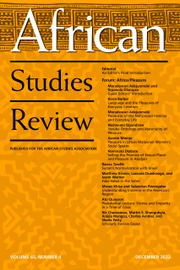With Dahomey, Mati Diop affirms her place as an emblematic filmmaker deeply engaged with the existential theme of return. This haunting, poetic documentary archives the long-overdue restitution of twenty-six royal treasures looted from the Kingdom of Dahomey by French colonizers over two centuries ago. Premiering at the 17th Berlinale, where it won the Golden Bear, the film has resonated globally.
Diop, who made history with her debut feature, Atlantique /Atlantics (2019), awarded the Grand Prix at Cannes, returned to her roots for Dahomey’s public première in Senegal, followed by Benin—present-day Dahomey—where most of the film was shot. By the time the UK première was announced for the BFI London Film Festival, demand was so high that tickets sold out within hours. I attended both the BFI and Film Africa screenings. The emotions stirred by the first viewing, enhanced by a Q&A with Diop, remained vivid during the second.
It takes a moment to understand the significance of Dahomey in Diop’s filmography. The film is a mise-en-abyme of cinematic references, of performances within performances. The opening sequence is reminiscent of one of the most iconic scenes in the history of migrant cinema, L’Afrance (2001, dir. Alain Gomis). There, the film opens with a series of souvenirs with the French flag being sold by Senegalese people near the Eiffel Tower. In Dahomey, colourful mini-Eiffel Towers are sold by faceless street vendors on a dark Parisian evening. Their invisibility contrasts with the joyous people dining on a boat on the Seine. Then, over the river’s dynamic waters, which seem to mirror the Atlantic Ocean, we read: “November 9, 2021. 26 royal treasures from the Kingdom of Dahomey are due to leave Paris.” The date is marked as historic.
This aesthetic choice signals that Dahomey is not just about restitution. It’s also about migration and return, themes central to Diop’s work. In Atlantics, Ada is haunted by the return of the spirit of her beloved Suleiman. In Dahomey, we are haunted by the treasures themselves—especially the anthropomorphic statue of King Ghezo, whose identity was erased in France as “number 26” and is now recovered through return. Hence, the title Dahomey—a place that exists more in memory than in the present, as it is now called Benin.
The journey begins in the Musée du Quai Branly. The juxtaposition of troubling fixed-camera shots of corridors, security cameras, and locked doors, over buzzling sounds in the basement evoke a prison-like atmosphere—130 years of captivity. This recalls Les statues meurent aussi (1953), the anti-colonial film by Resnais and Marker banned in France in the 1960s, with point-of-view (POV) shots of the statues in captivity. But where that film mourned the death of African art in European museums, Dahomey imagines resurrection, through restitution. The treasure of King Ghezo speaks in a ghostly, genderless voice, not in French, but in ancient Fon: “I journeyed so long in my mind, but it was so dark in this foreign place that I lost myself in my dreams becoming one with these walls.” Dreams, a recurrent theme in Diop’s cinema, are a time-space of liberation, of a possible return.
We then meet the protagonists of the film, the twenty-six selected treasures for the repatriation. The sonic atmosphere in Quai Branly—drilling, hammering, entering the treasures in coffin-like crates—evokes death. But the POV shots from within the crates suggest rebirth. In Benin, the treasures are festively greeted like stars, especially by the palace of President Talon. More significantly, they become the subject of public debate at the University of Abomey, where young people reflect on what restitution means to them.
Here, the film becomes multilayered—a mise-en-abyme of performances and encounters, where Diop’s mise-en-scène contains the mise-en-scène of the museum, of the government and of the youth, carefully selected through a casting process, to ensure the plurality of voices. The observational camera listens attentively, capturing excitement, confusion, even indifference. To what extent can people feel attached to treasures after having been alienated from their history? Diop’s camera becomes an act of deep listening, amplifying voices long silenced.
To Diop, it is this encounter with the youth that makes the restitution historic. Dahomey is the film that had to be. It is a response to two moments: Macron’s 2017 speech in Ouagadougou promising restitution within five years, and the 2021 announcement that twenty-six treasures would be returned. Diop, then writing Atlantics, had imagined a fiction told from the perspective of an African mask, from the day of captivity to its repatriation. But when the real restitution was announced, she felt compelled to document it. The result is Dahomey.
The film ends in a dream-like, poetic and self-referential way. The Atlantic Ocean, a crucial space in Diop’s work, reappears at night in Cotonou. Over the sound of the waves, the treasure’s voice returns: “Atlantic, shores of the wound,” that same ocean that had left an aftertaste, as said at the beginning of the film. The cyclical narrative dimension closes with a declaration: “I will no longer mull over my incarceration in the caverns of the civilized world.” And just like at the end of her short film, Atlantiques (2009), we see a lighthouse, this time not in Mamelles (Dakar), but in Cotonou. A young woman sleeps by the ocean. Is she dreaming? “There are the dreams of the continent,” the treasure had said.

